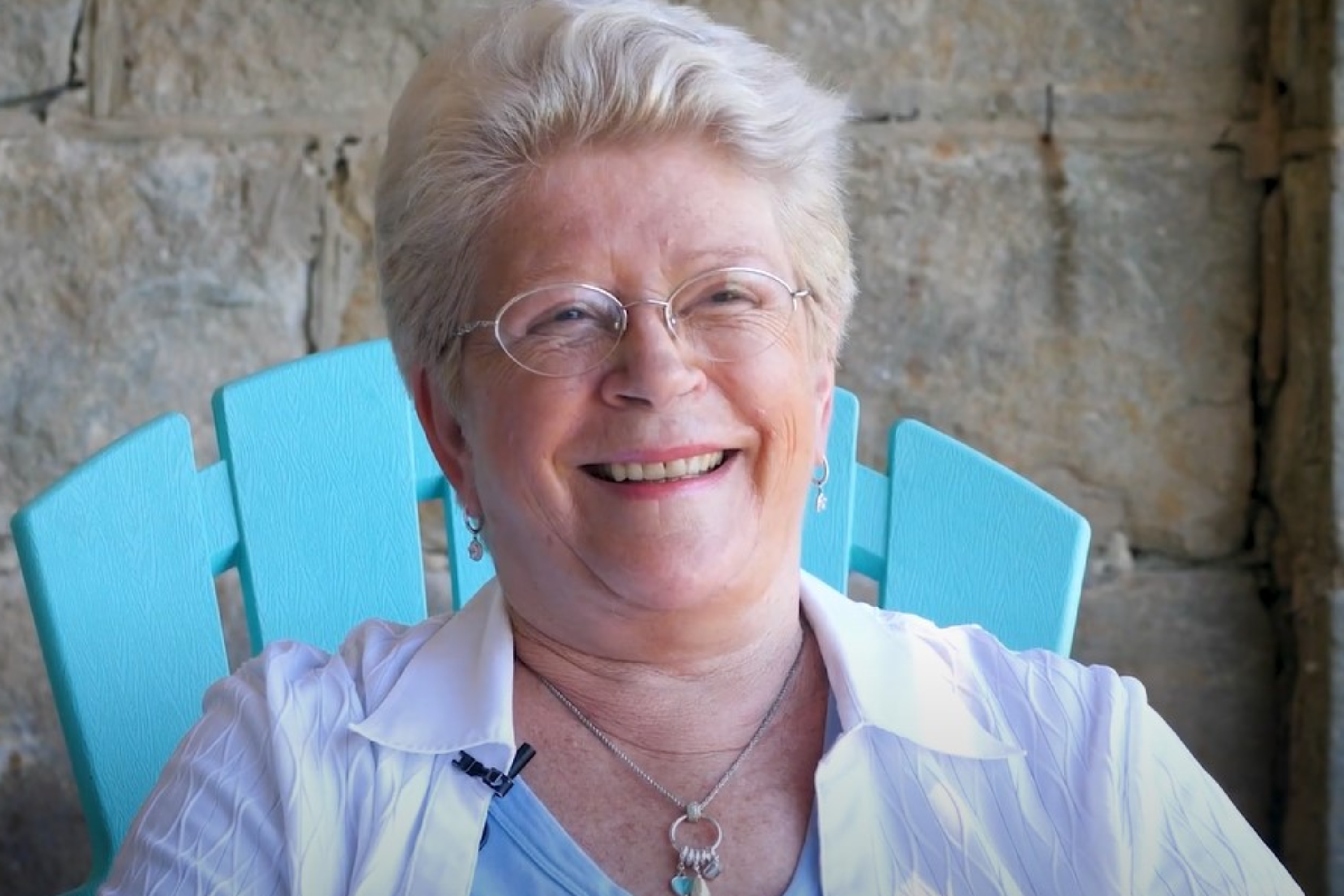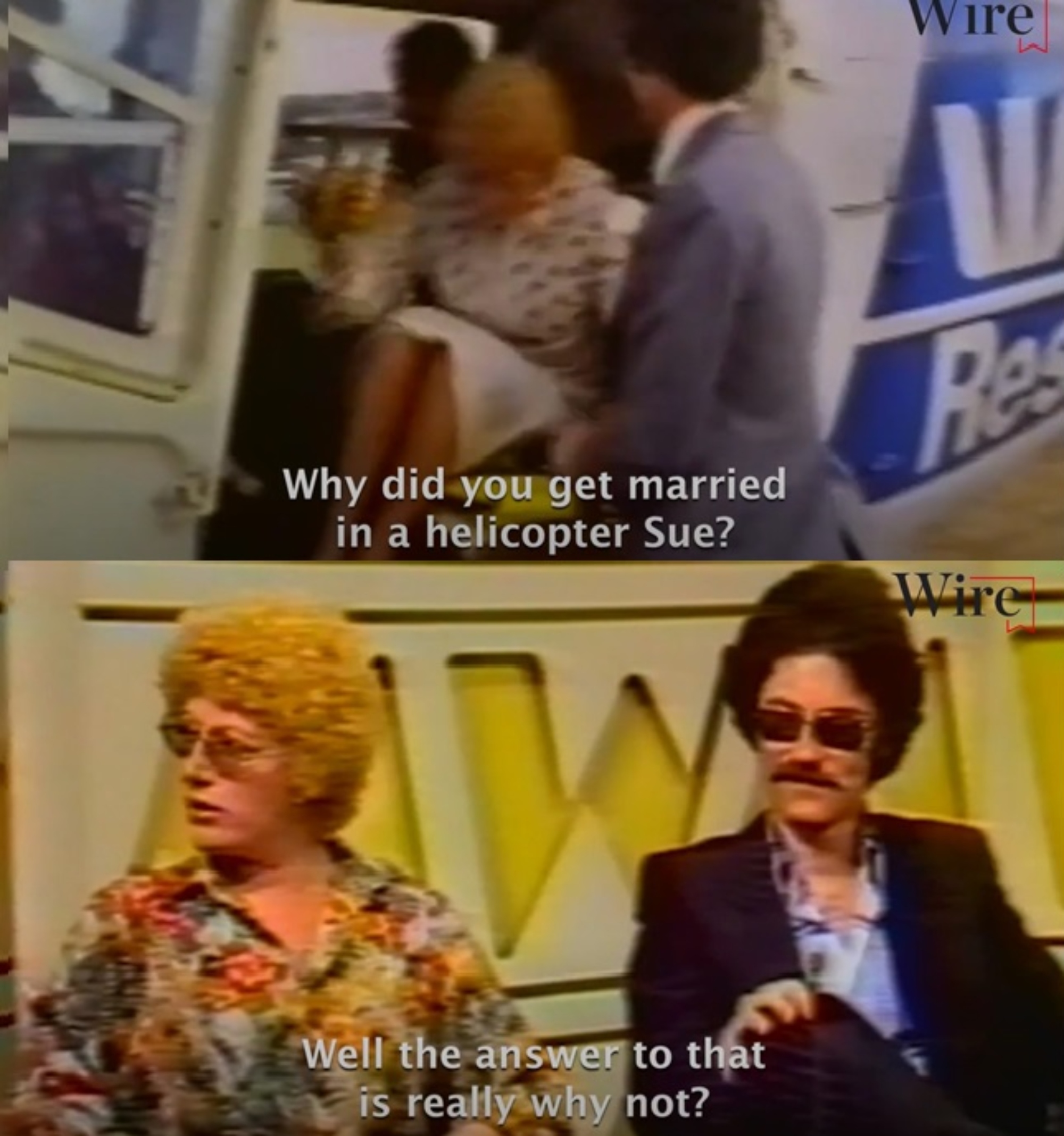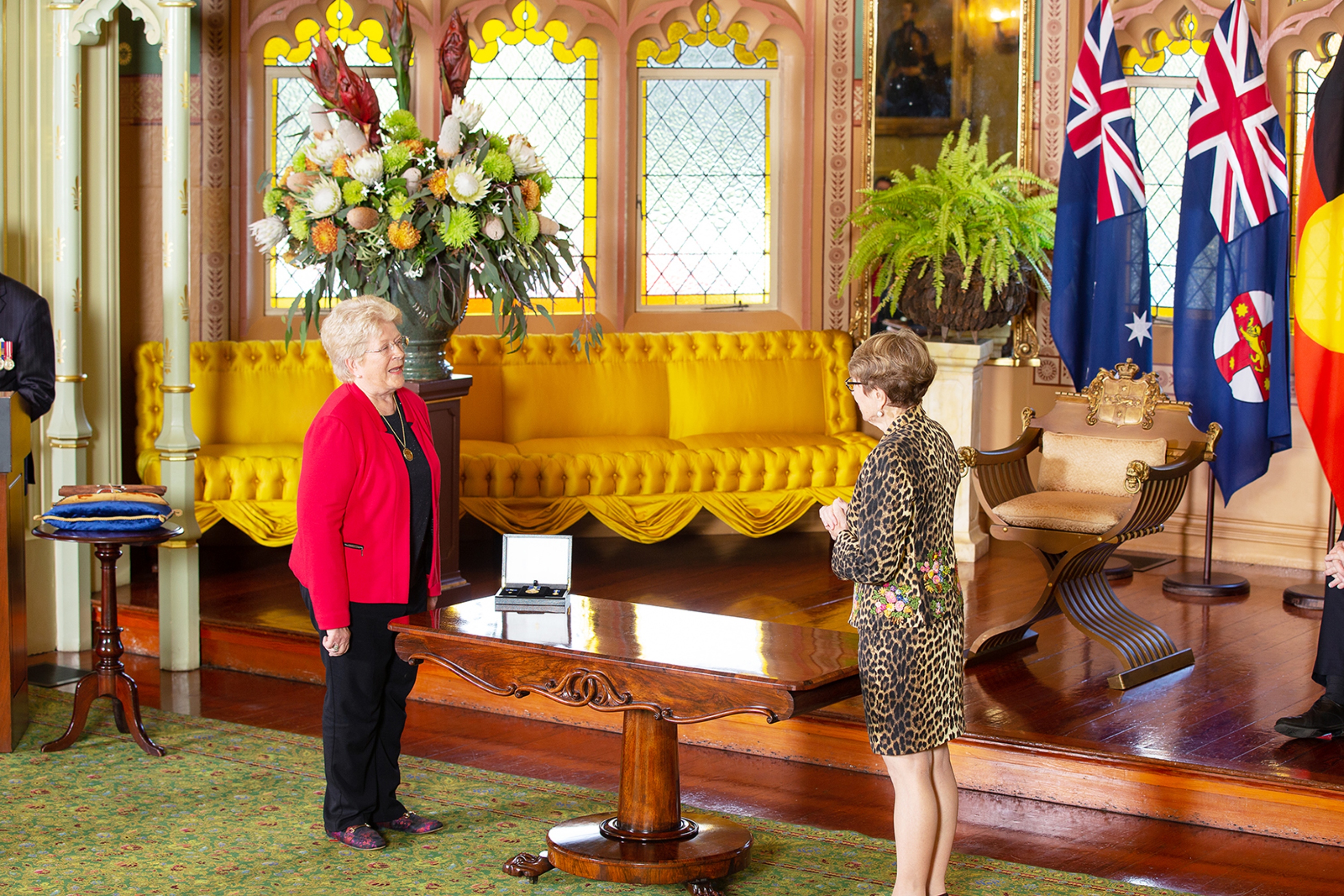Dr Sue Rowley OAM

Few doctors can claim to have seen the results of a lion attack or rescued surfers via helicopter.
Even fewer will have interviewed for a life changing job in a hospital whilst staying there as an inpatient.
But that’s just the start of Dr Sue Rowley’s (MBBS Medicine 1973) story spanning 50 years of travels and medical practice, which includes having been the first helicopter rescue doctor in Australia.
When Dr Rowley first mentioned her ambition for quality medical care to be delivered through helicopter rescue, her hospital colleagues laughed. But decades later and with countless lives saved along the way, Dr Rowley can look back proudly on her career as a pioneer in helicopter medicine.
In the Australia Day 2021 Honours List, Dr Rowley was awarded an Order of Australia Medal (OAM) for service to medicine, and to emergency rescue organisations.
Reserved for medical school
As many stories do, Dr Rowley’s starts with a childhood dream. Her favourite playtime activity was pretending to be a doctor treating her friends as patients. She jokes:
“I think I was born with a sign saying, ‘reserved for medical school’!”
Despite the challenges of being a woman applying to medical school in the 1960s, she gained a place at University College London (UCL), later transferring to St Mary’s Hospital Medical School for her clinical years.
The travelling medic
During her elective, Dr Rowley spent six weeks in the Transkei, South Africa. Then six weeks in Nairobi, Kenya. She learnt a lot in a short space of time.
“I witnessed medical conditions in Africa that I have never seen since, ranging from kwashiorkor to the results of a lion attack on a Masai.”
However, it was visiting a flying doctor base at Nairobi airport that sparked something much bigger - it was the first time Dr Rowley had connected flying with the delivery of medical care.

An introduction to emergency care
After graduating in 1973, Dr Rowley worked at St Mary’s Hospital in London, occasionally attending 999 calls. She describes being ‘amazed’ by the level of care patients would receive before even arriving at the hospital’s resuscitation area and felt that this was a strength of the system.
With a couple of years of London work experience under her belt, Dr Rowley decided to visit Australia to see some friends. Describing herself as a young and passionate traveller, journeying to the other side of the world was an opportunity too good to miss...
An unexpected turn
En route to Australia, Dr Rowley ended up injuring her knee during stopover in Singapore. On arrival in Sydney, her injury meant she needed a wheelchair to leave the plane. Little did she know how far-reaching the consequences of this incident would be.
Whilst recovering in the Royal North Shore Hospital, Dr Rowley found herself interviewing for a job and accepting the offer, despite only having planned to stay for a few months.

The first rotation was at an emergency department in an idyllic beachside suburb of Sydney. Here Dr Rowley was introduced to the Surf Lifesaving Australia Helicopter Rescue Service (SLS HRS). Before long she was volunteering for weekends, providing medical input as the first flying doctor. As well as encountering surfboard and drowning injuries, the service was getting a number of other emergency calls like heart attacks and asthma attacks.
“I was fascinated. I loved flying and I loved medicine and I had already witnessed how these two things could be connected whilst working in Nairobi and London.”
Dr Rowley recruited a dozen medical colleagues to also be involved, who accepted on a shared weekend roster basis – all voluntary for many years, bringing medical expertise to the helicopter rescue service.
Her commitment to emergency care and ambition to create a sort of ‘flying intensive care unit’ later landed Dr Rowley the title of Director of the Helicopter Rescue Service for NSW.
She also became the first woman to be appointed to the SLSA NSW medical committee at a time when women were not actually allowed to be active members – until 1980 that women were being denied full access to official surf club membership in Australia. Dr Rowley was paving the way for women to be recognised for rescue work.
Dr Rowley wants you to know that teamwork is what made this dream possible.
Special mention goes to Ian Badham OAM, the original Surf Lifesaver in 1973 who raised required funds from a national bank in order to lease a basic helicopter, which would patrol the Sydney metropolitan area just on weekends in the summer months – she adds: “without Ian nothing would have started”.
Further mention also goes to Peter MacCormick OAM and Rick Mailey OAM who were two of the original dozen voluntary rescue colleagues. Dr Rowley recalls how Peter and Rick went on to raise the money required for the whole HRS to survive and grow, even mortgaging their own houses to create the bridging finance for this to occur.
Visiting the helicopter medicine pioneers of the world
Passionate about flying and committed to improving access to emergency medical care, Dr Rowley set off on a fact-finding mission to learn how helicopters and pre-hospital services were operating around the world. It was 1980, so pre-internet, but Dr Rowley did have a selection of global contacts and some specific sites she was keen to visit.
Starting in the USA, Seattle came first. Dr Rowley met with a knowledgeable contact known as Dr Leonard Cobb to discuss his approach to paramedic training and shared his training manuals back with the NSW ambulance service. In Denver, she was allowed to fly with the Flight For Life service based at St Anthony Hospital and became inspired by their ICU-qualified flight nurses and rooftop helipad, both of which reduced the time patients would spend waiting to be treated in a hospital emergency department. Later at the R Adams Cowley Shock Trauma Center in Baltimore, Dr Rowley met Dr Cowley who had coined the concept of the ‘Golden Hour’, meaning the critical first 60 minutes of patient care. Europe came next.
In the UK, Dr Rowley visited RNAS Culdrose in Cornwall to see the coastal rescue helicopters.
Germany, she describes as a ‘revelation’. Here it was the motoring organisation, ADAC, who were financing medically staffed MBB Bo 105 helicopters that could get to an autobahn accident within just 20 minutes. Dr Rowley based herself at Munich Clinic Harlaching and was blown away by their ‘whole operational setup’.
Switzerland was the last stop. Dr Rowley discovered that Rega, also known as Swiss Air-Rescue, were using helicopters and Learjets not only for mountain rescues, but also to transport premature babies to hospital. She describes how eye-opening it was to see how the Swiss had begun using their helicopter for mountain rescues but had gone on to apply their infrastructure to other types of medical rescue. This was in contrast to Sydney, where the helicopter rescue service had been established solely for beach-related incidents.
Dr Rowley felt that Sydney’s service had greater potential. Armed with her new ideas, and some donated Swiss mountain rescue equipment, she returned home to the NSW coast.
A satisfying conclusion to decades of work
By the 1990s, most of Dr Rowley’s plans had come to pass. The helicopter base where she had been stationed on Sydney’s northern beaches was eventually moved to a hospital with a major trauma centre. The helicopter crew were selected to include specialist doctors and paramedics who could triage to the right unit. Today there’s even a dedicated NSW Newborn and Paediatric Emergency Transport Service (NETS), with their own helicopter called Child Flight.
“The service has progressed so much since we did our first neonatal retrieval into Sydney Children’s Hospital from a small country town base hospital, where the helicopter was greeted with fire engines, police cars as well as an ambulance. A photograph of the event appeared as the lead story on the front page of the Sydney Morning Herald the next day! Today this scenario is an expected part of the Child Flight service.”
Dr Rowley worked with the HRS from 1976 until 1987. She went on to have two children – James and Sarah, who today are working in the law and education sectors respectively.

Today, rescue services are the norm. However it’s only thanks to the dedication of Dr Rowley and others like her around the world that people have access to specialist emergency care before they even reach a hospital.
She reflects:
“Today there are multiple helicopter services in NSW and around the world. In NSW alone we have a whole network of medical rescue services: police helicopters, news helicopters and happily a dedicated surf rescue helicopter. These services are taken for granted nowadays – to me, that is surely a sign of ultimate success for us pioneers who could only dream of this ever actually happening.”
Never give up on your dreams
“Many of my medical colleagues at the time would tease me over my dream to create this ‘flying intensive care unit’ that would be based at major hospital and staffed by suitably trained medics, who would be able to provide immediate medical aid before flying patients to the appropriate hospital. However, I could see helicopters landing at football fields to collect spinal injured players, helicopters landing on freeways at serious accidents. I knew my dream was possible, yet my colleagues still laughed at the very thought - albeit good naturedly.”

In the Australia Day 2021 Honours List, Dr Rowley was awarded an OAM for service to medicine, and to emergency rescue organisations.
She remarks: “In the 80s, the main UK aerial rescue service was provided through The Royal Navy. Today, I watch sophisticated aerial medical rescue helicopters operating widely in the UK on my television set at home in Sydney!”
After 50 years of medicine Dr Rowley will soon be retiring. She tells us that she feels privileged to have been able to contribute just a little bit to a profession that she has “always felt passionate about”.
Dr Rowley has created a legacy that the people of Sydney will benefit from for years to come, and her journey has paved the way for new generations of women doctors. Today, she is also pleased that women don’t need to fight quite as hard to earn the same opportunities in STEM as men.
Media
A short film was made by Westpac HRS about Dr Rowley in 2019 as part of celebrating International Women’s Day in Australia. Watch it here.
Dr Rowley was also featured in a television programme called ‘This is Your Life’, which starred some of her patients, parents, and the story of how she met her husband, Michael. Watch it on YouTube here.



